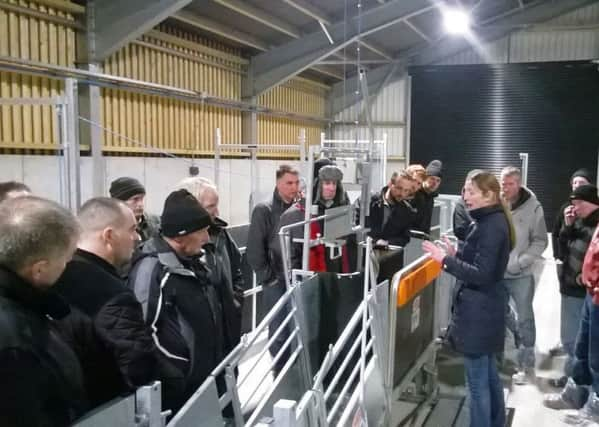DAERA Management Notes: Beef and sheep


Make the most of spring grass by getting livestock out to graze where possible. Trial work continues to prove the benefits of dividing larger fields with livestock grazing a selected area for no more than three days. The benefits are due to the grazing of younger, leafier grass. This on/off approach results in less poaching if set up and managed correctly. It is important to graze fields and paddocks out in April to ensure quality grass and growth in subsequent grazings.
What is poaching damage?
Recent trials have found that a light or moderate poaching of a perennial ryegrass dominated sward on free draining soils has no effect on herbage mass at the next grazing, whereas severe poaching reduces herbage mass at the next grazing by 30%. Cumulative herbage production for the year was unaffected. These swards and soils are resilient to various levels of poaching damage.
Advertisement
Advertisement
On creeping bent dominated swards on poorly draining soils poaching damage resulted in a reduction in herbage mass at the next grazing of 21%, 69% and 97% for light, moderate and severe poaching respectively. Cumulative herbage production was also reduced by between 14% and 30% for the various levels of poaching damage.
Non perennial ryegrass swards on wetter soils are not capable of returning to productivity. Therefore consider multiple entry points to fields, dedicated tracks and walkways, a ‘sacrifice’ area, only grazing the lightest stock in early spring and minimising damage through an on/off style of grazing.
Things to watch out for!
Freshly calved cows may need supplemented with magnesium. Stress factors such as cold, wet weather or a shortage of grass may trigger grass staggers. Also be aware that fast growing grasses well fertilized with potash can also trigger this condition.
Keep a close watch on young calves for scours, pneumonia and joint ill even at grass, as early detection greatly reduces the effects. Do your cows need any boosters before the breeding season starts? Vaccination of calves for clostridial diseases is required as the risk of disease increases as they grow and eat more grass.
SHEEP
Electronic identification (EID)
Advertisement
Advertisement
Electronic identification became compulsory on 31December 2009 but how many of you can say it has been a real benefit on your farm over the last eight years? One farmer who is realising the benefits is Business Development Group member Clement Lynch.
Clement says: “It’s something I thought about for a while and have now been doing for a few years. Last year I created the link between lambs and ewes at a month old and this year I plan to tag them at birth or shortly after. This will allow me to monitor live weight gains in the first five weeks which will be achieved predominantly from milk.
“These are the ewe lambs I target for replacements. Recording also allows me to track individual ewes and see if they have any reoccurring issues and most, if not all, of my culling decisions are based on this real data.
“The main advantage is the weight records. I finish all my lambs and traditionally have always had batches of lambs throughout the winter I couldn’t finish. These lambs are now identified early and any not gaining sufficient weight are removed, housed and fed after which their gains increase dramatically. The gain is worked out automatically and removes all the hassle of paperwork.
Advertisement
Advertisement
“In the first year I just recorded weights but each year I become more confident with the system and I am now recording ram details and medicines. This is another useful tool as when weighing lambs the system flags up withdrawal periods and helps keep me compliant.”
The real benefit of EID is the data which can be captured allowing informed decisions to be made. If something isn’t measured then is it really managed?